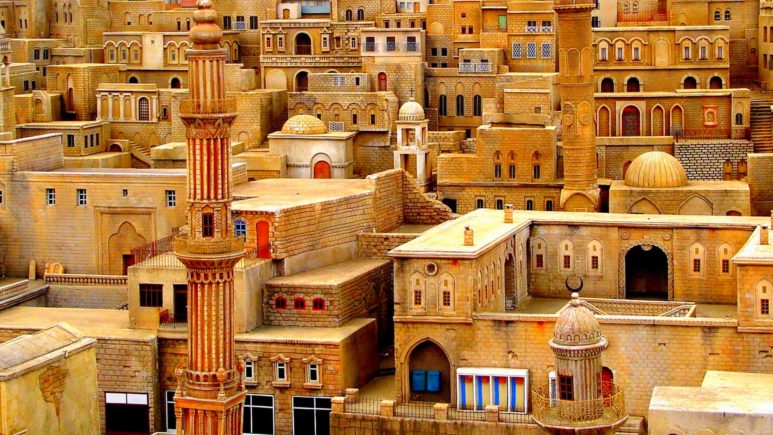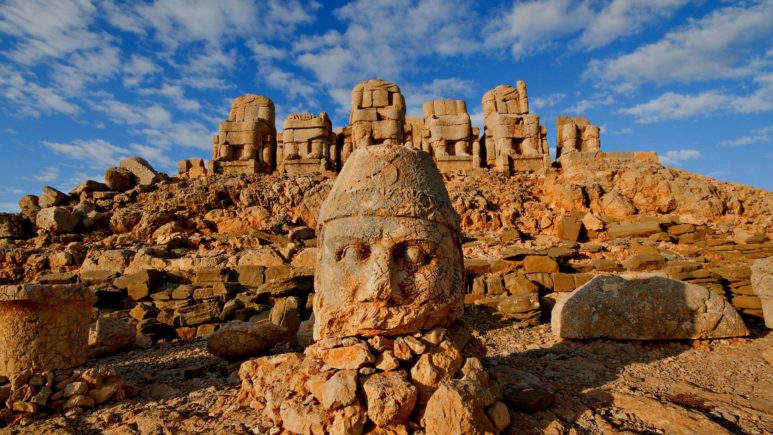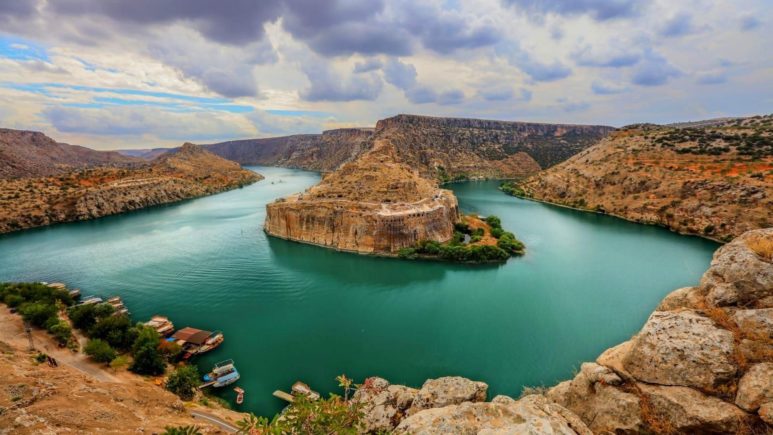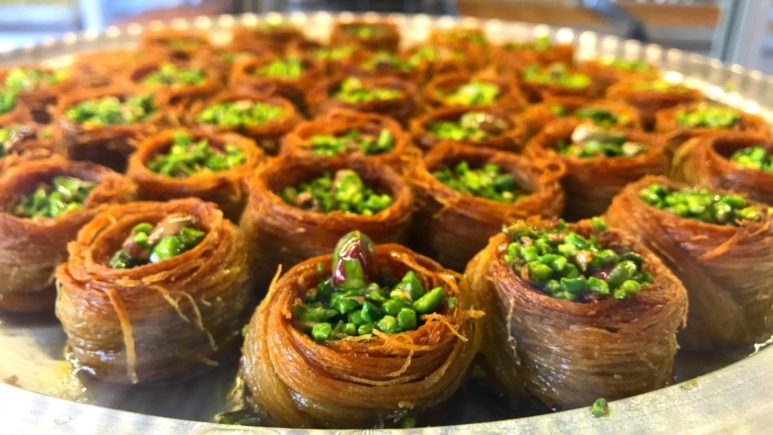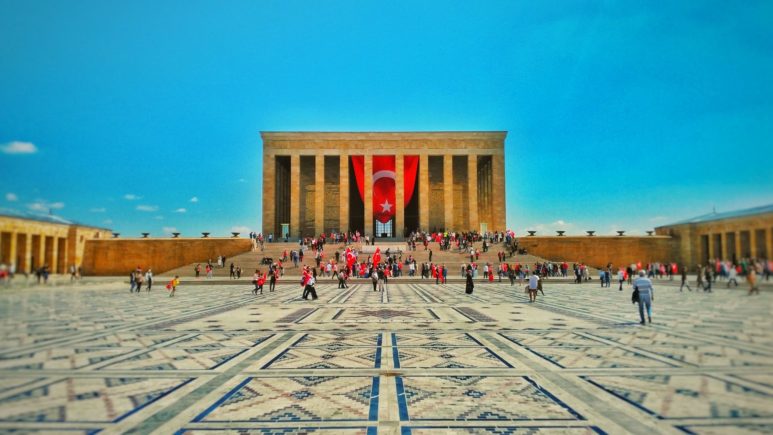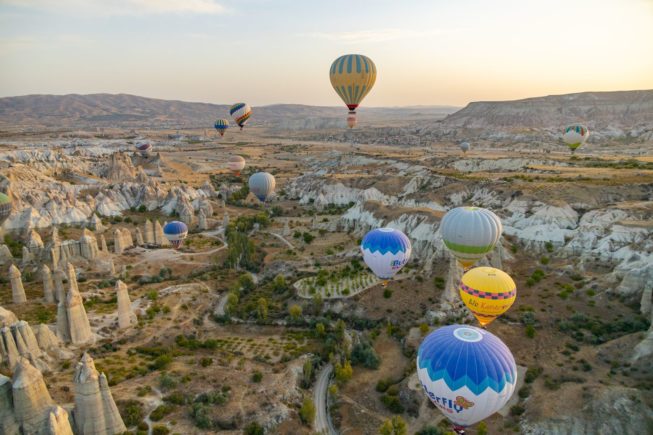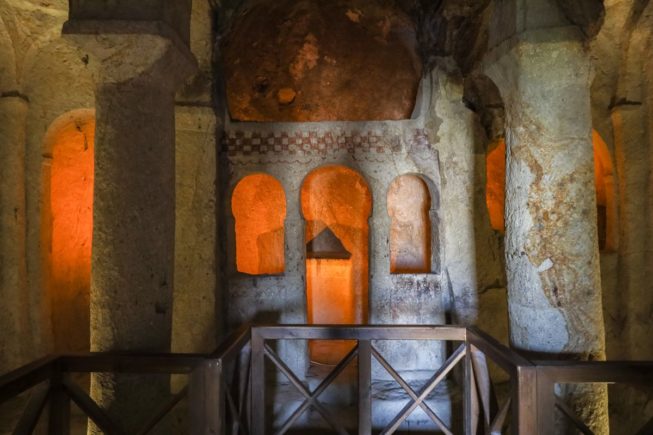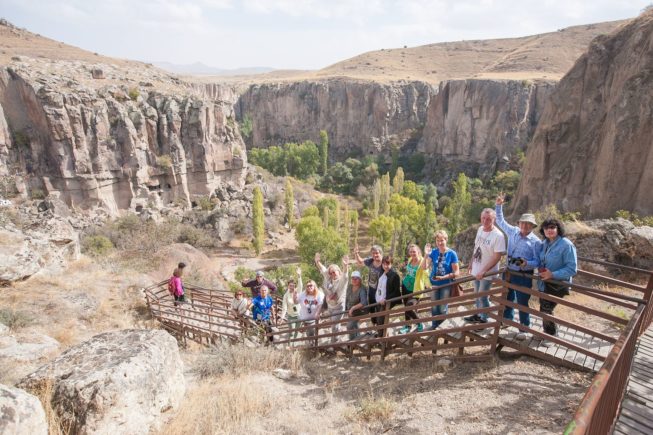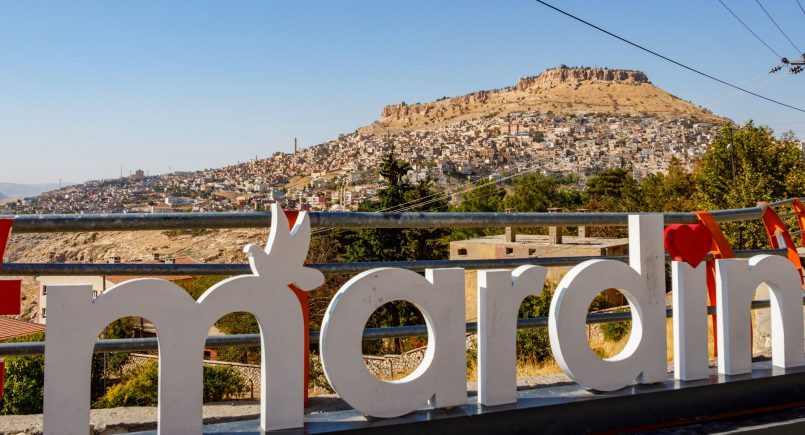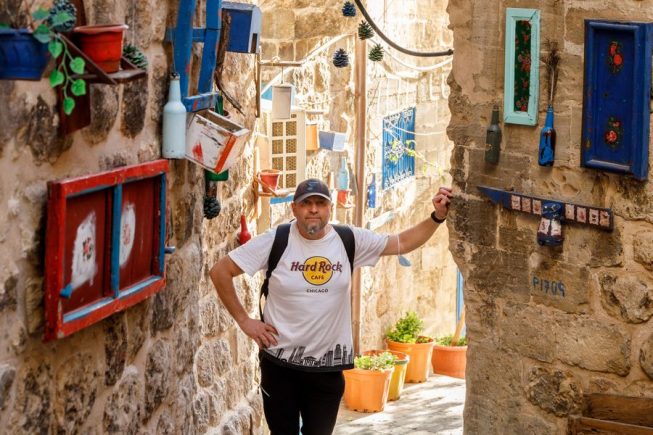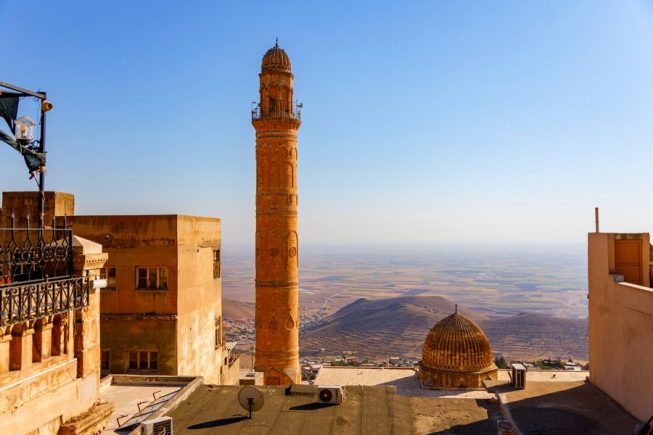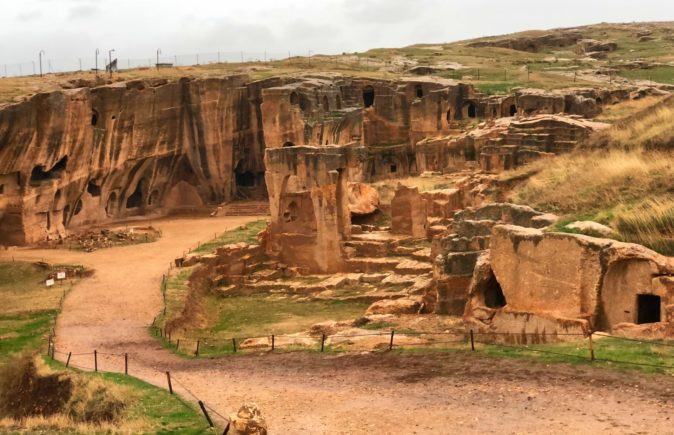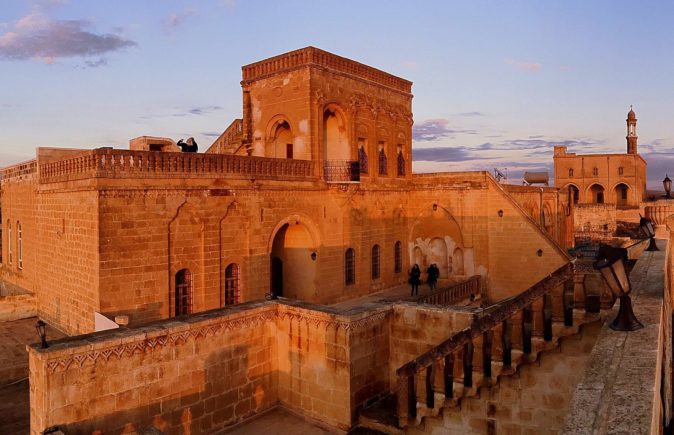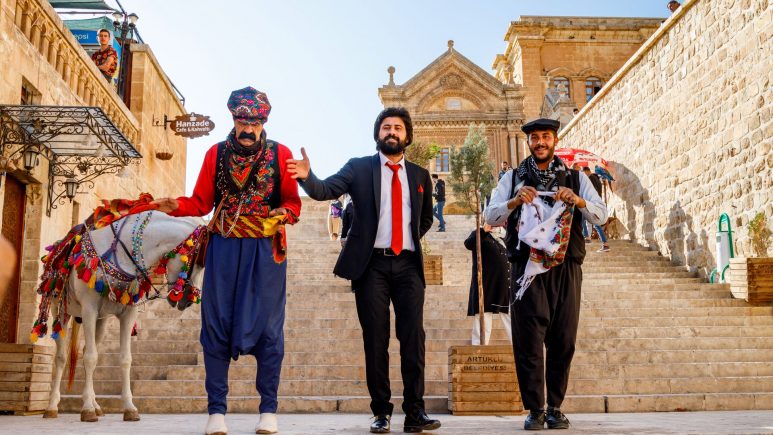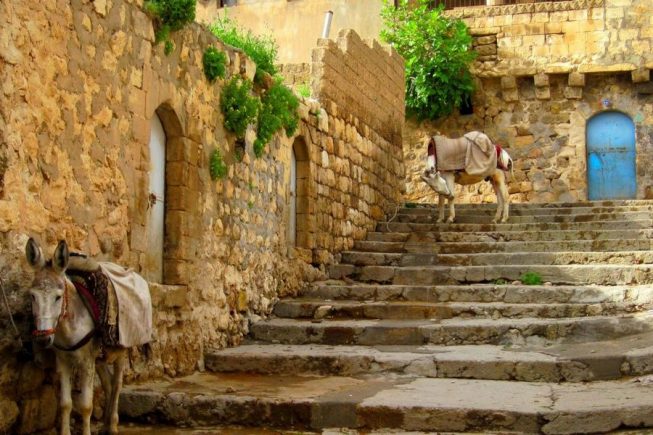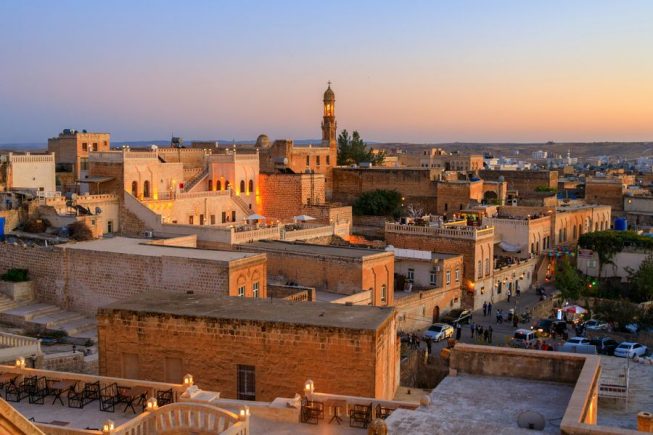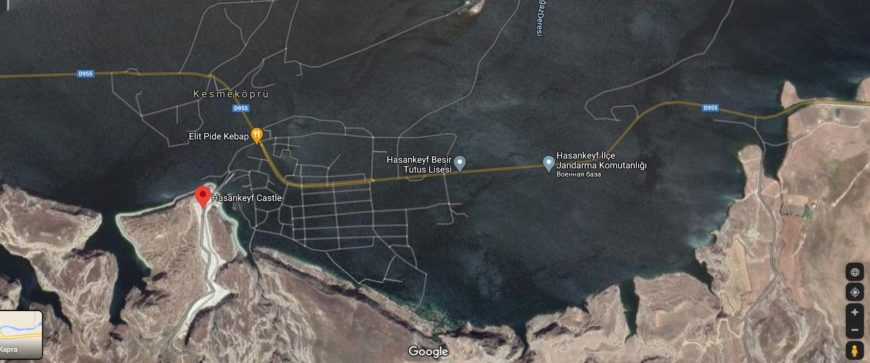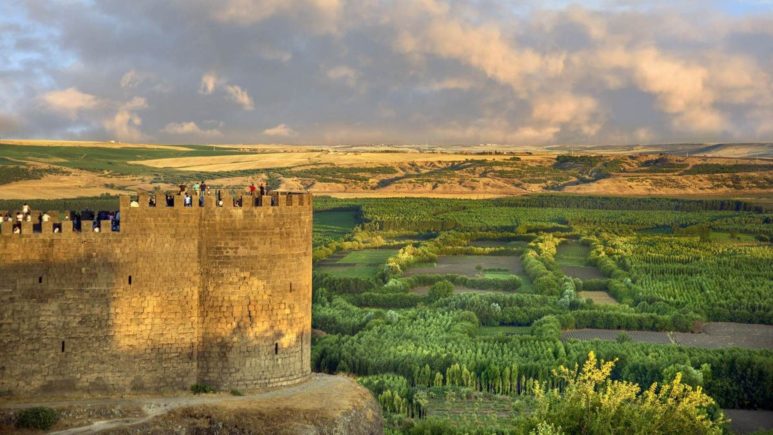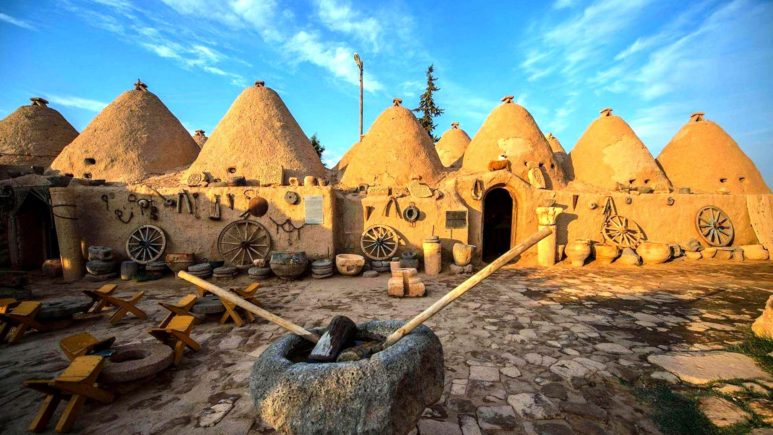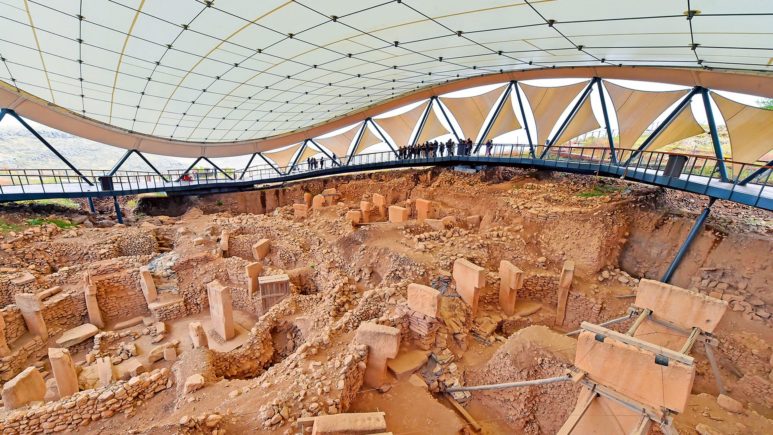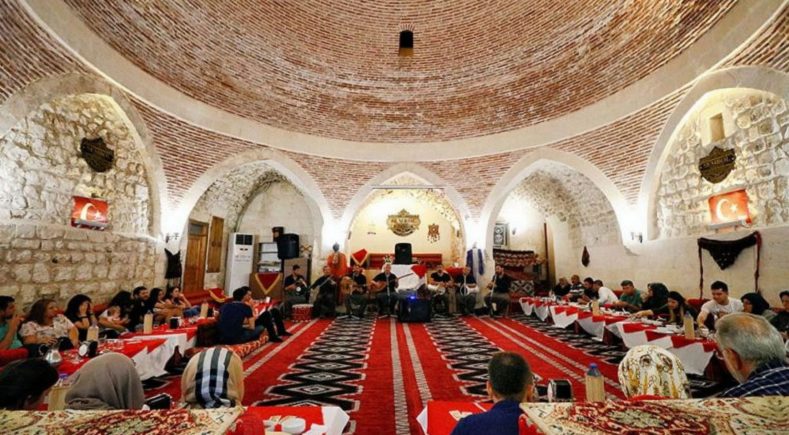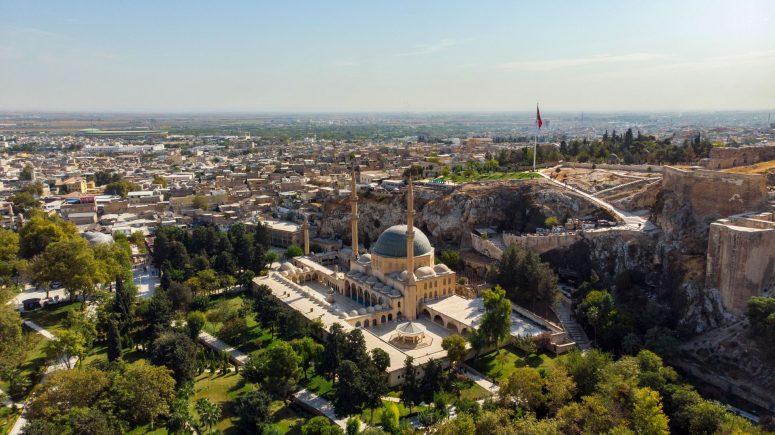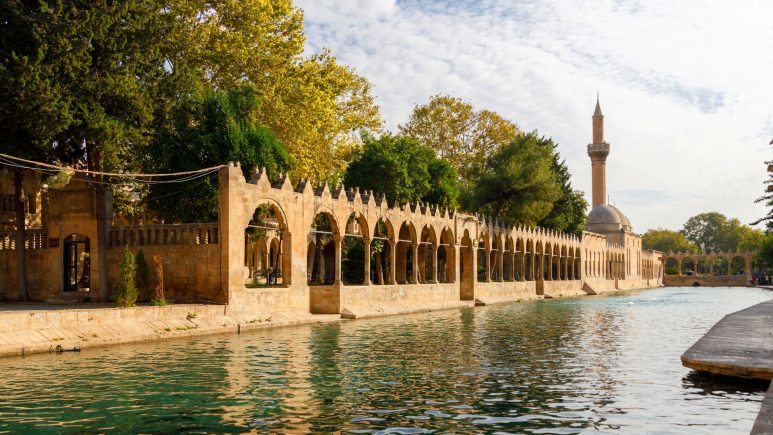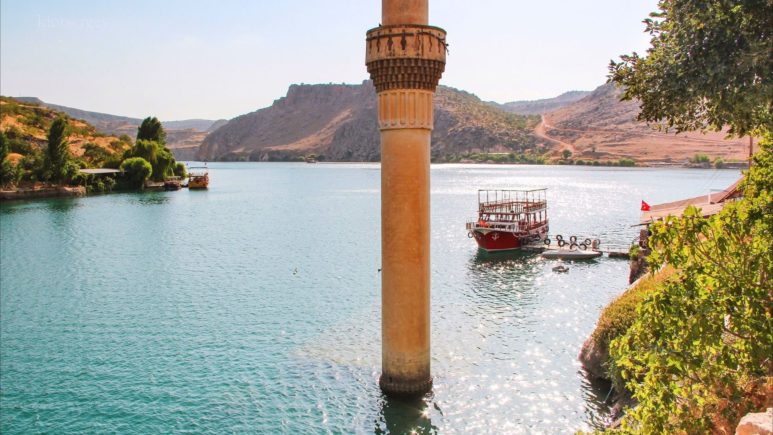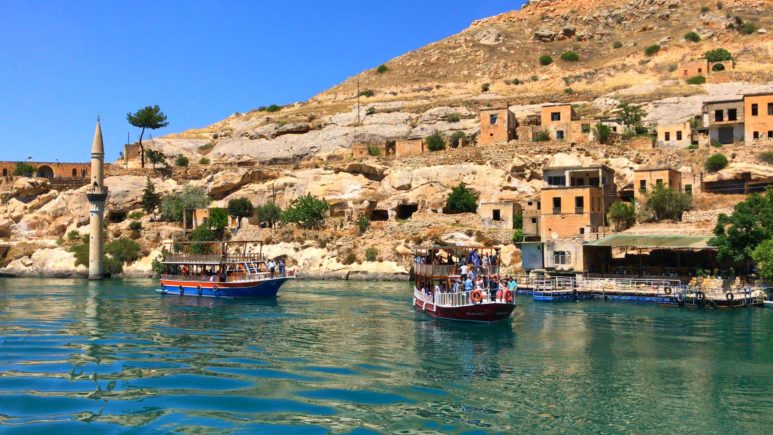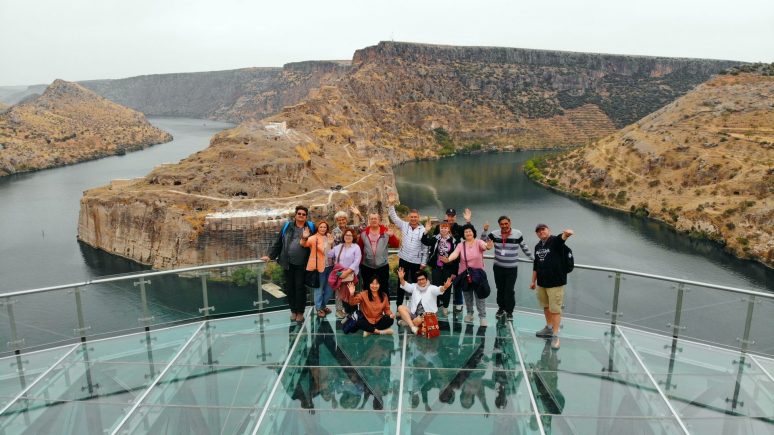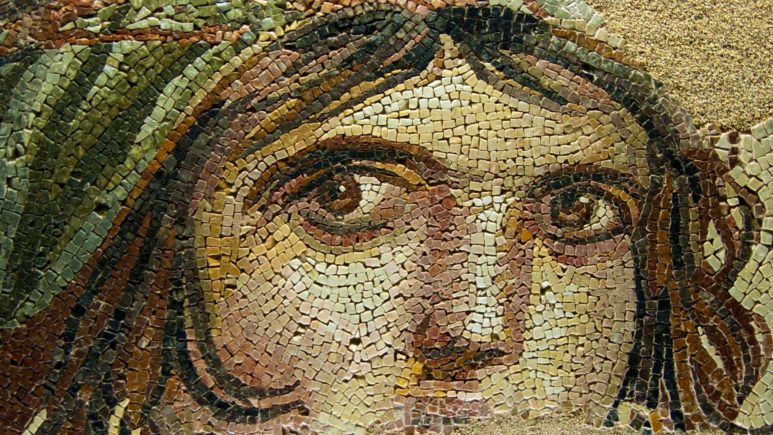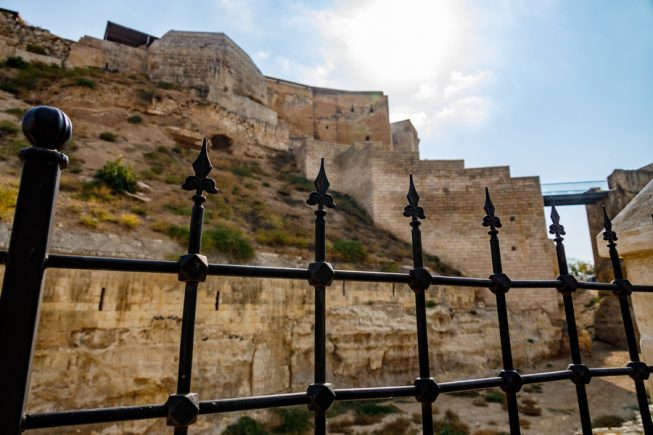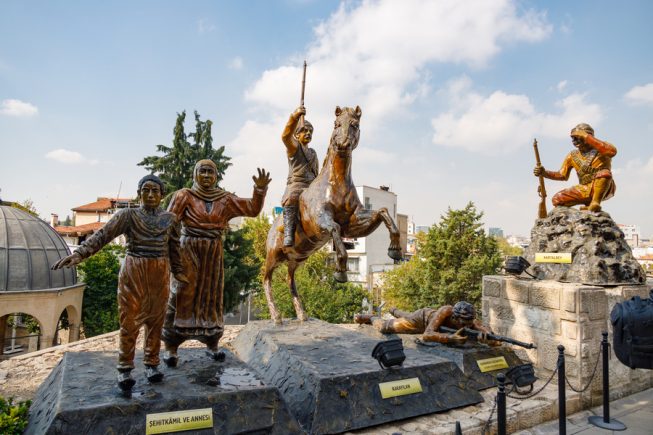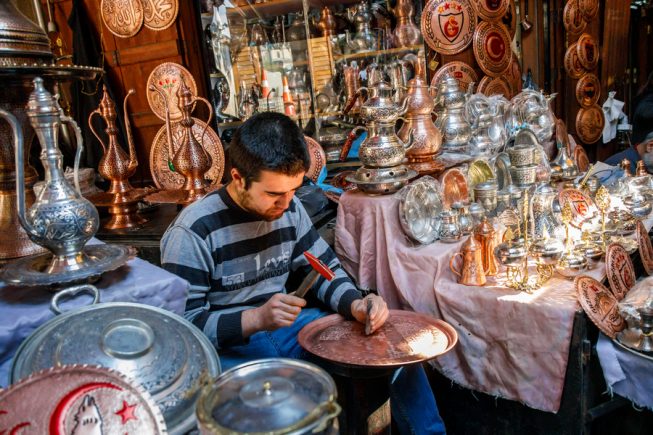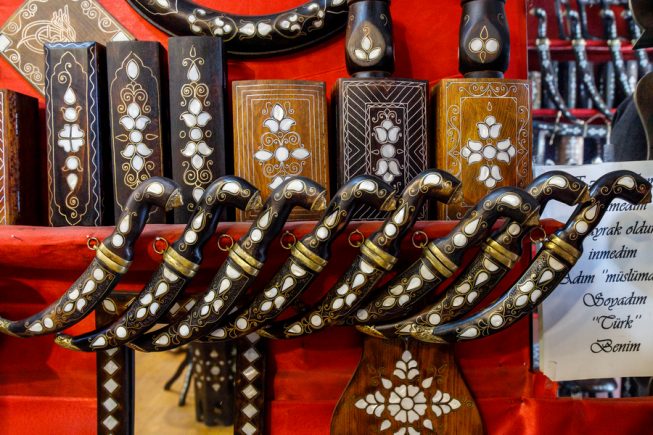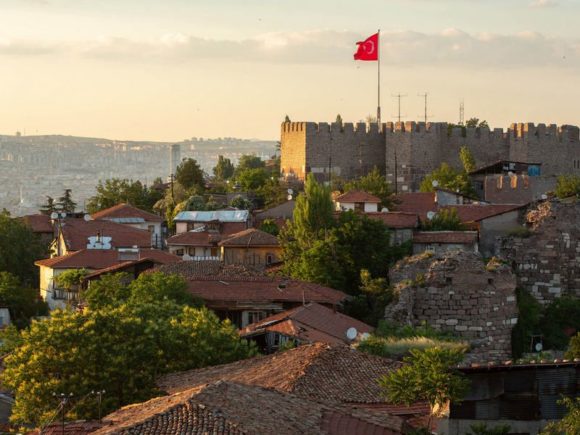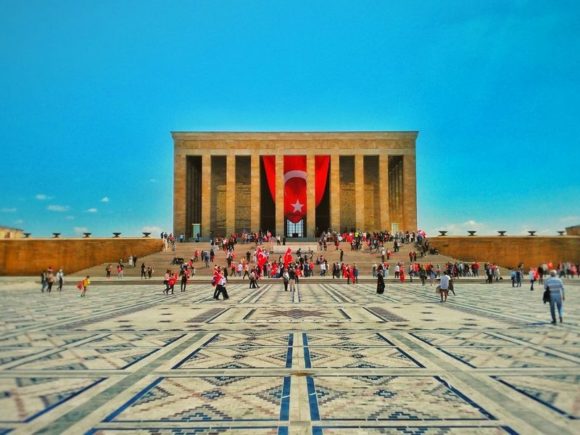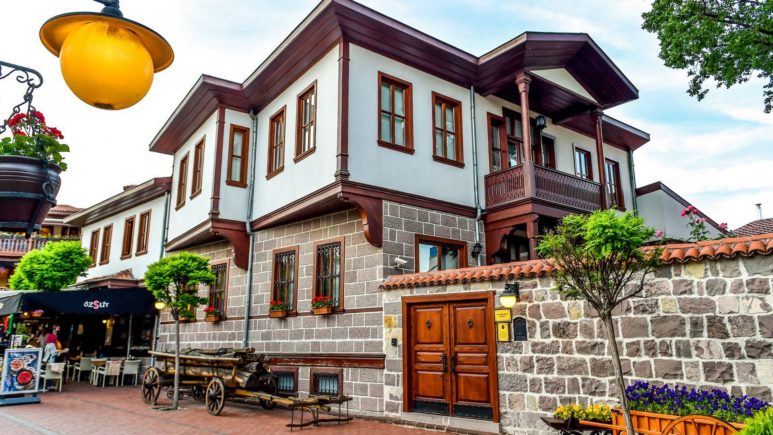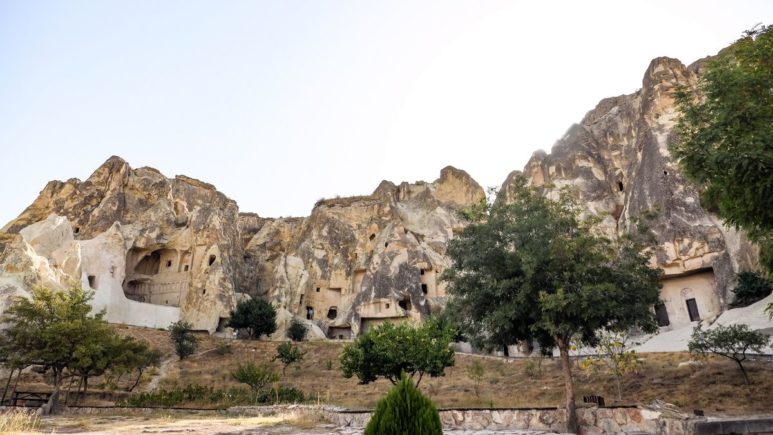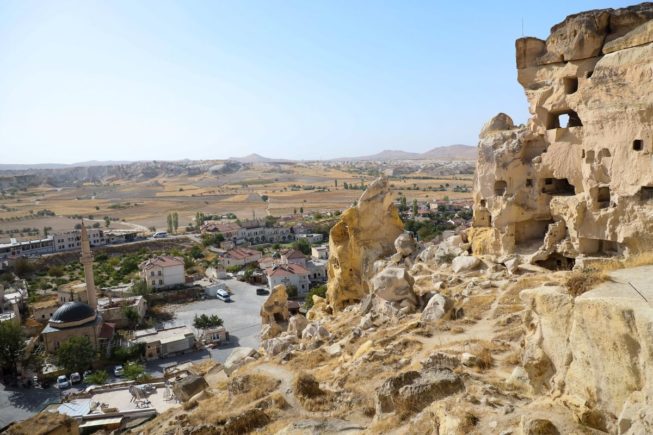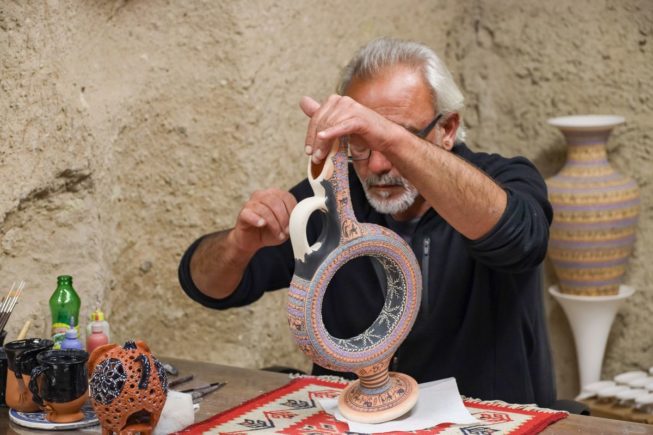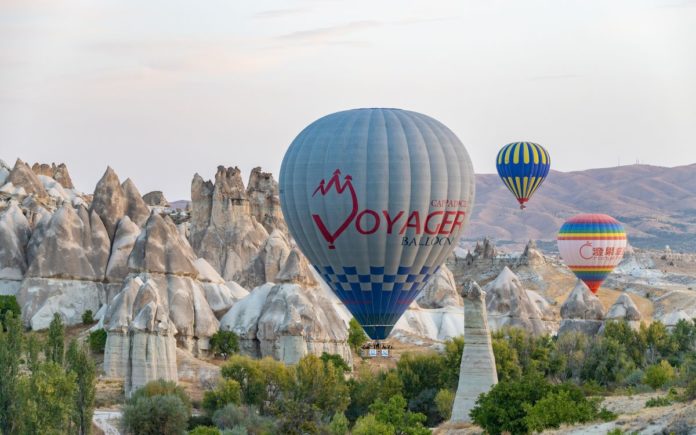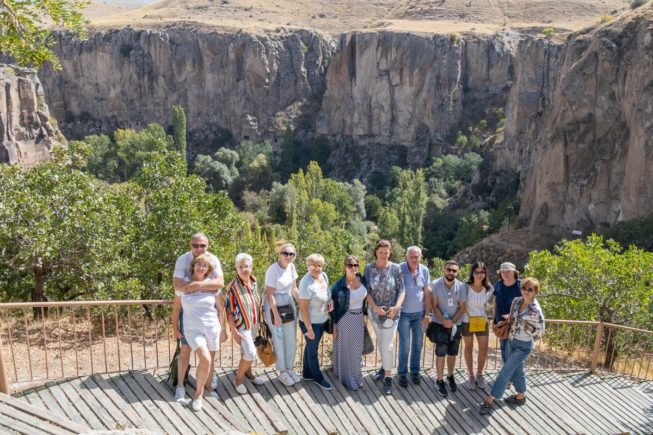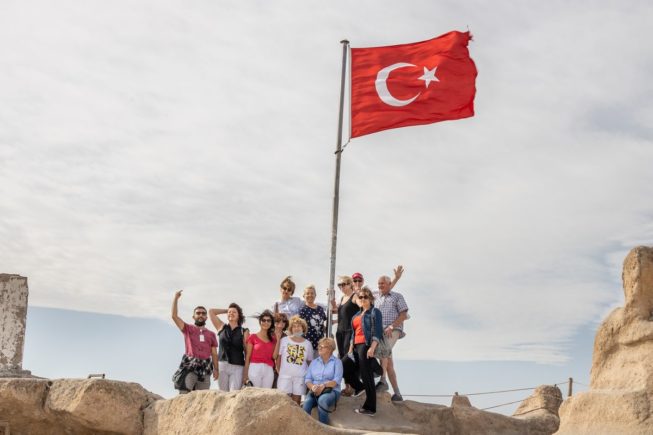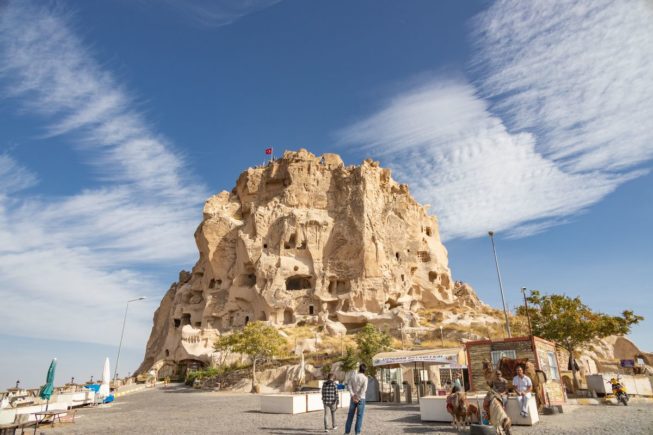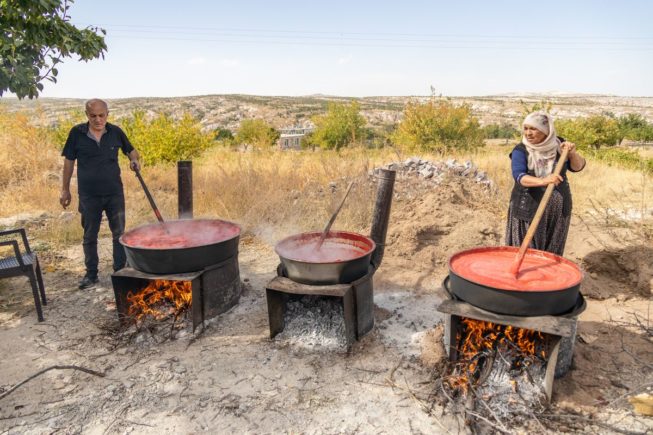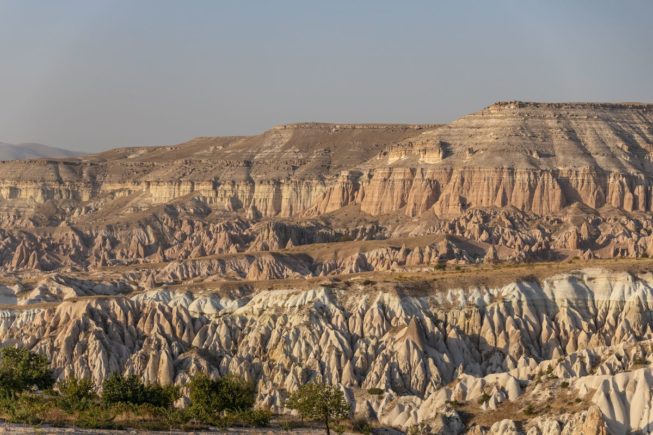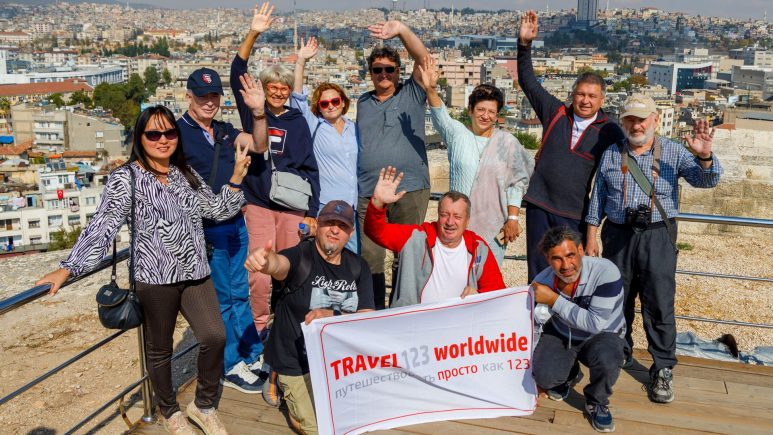Grand Anatolia Journey: Ankara, Mesopotamia and Cappadocia
Arab-style cities that remember the caravan drivers of the Great Silk Road, the oldest settlements in the world between the Tigris and Euphrates rivers, mentioned in the biblical books, the "Jerusalem of Anatolia" is the name of the region between Mardin and Urfa. All this is so strikingly different from the familiar Istanbul that once you are there, in Kurdistan and Mesopotamia, it seems that you got into another country.
Add to that Gaziantep, one of the 9 rare cities in the world to be named a UNESCO Creative City of Gastronomy.
Finally, we find ourselves in the midst of the fabulous landscape of Cappadocia, rich in historical past against a backdrop of bizarre natural forms and picturesque valleys.
If a 12-day trip seems too full for you, you can choose one of two shorter trips:
Travel through Mesopotamia in 8 days or Ankara and Cappadocia tour in 5 days.
Program of the author's tour in Turkey: Grand Anatolia. Ankara, Mesopotamia and Cappadocia
Day 1. Mesopotamia. Arrival in Mardin. Meeting and acquaintance
Most tourists get to Mardin by flights from Istanbul, although there are also flights from Ankara. When forming your group, TRAVEL123 chooses the most convenient flights depending on what country you are flying from and when you are arriving in Turkey.
Upon arrival, transfer to the hotel and meet the rest of the participants.
We stayed in the colorful old town at the Zinciriye Hotel Mardin (or similar). When choosing a hotel we had to choose between a Hilton or Ramada with the appropriate room standards, but 5 km away from the old town, or a hotel right under the walls of the fortress in an ancient building. We chose the old town, it is more entourage, and we will stay in the Hilton.
In the evening, we take a leisurely stroll through the streets of old Mardin to end up at sunset on the terrace with a cup of pistachio coffee (menengiç coffee), a Kurdish beverage made not from coffee beans, but from roasted fruits of the turpentine tree of the pistachio family.
A night in Mardin.
Day 2. Mesopotamia. Mardin and surroundings
Right in the morning we set off 40 kilometers from Mardin, almost to the Syrian border, to the place called Dara Mesopotamia Ruins, the ruins of an important Roman fortress settlement on the border with the Sassanid state (early Persians) where there was a Roman garrison. The arched system of water supply and storage is as impressive as Istanbul's Cisterna, and the ancient ruins at Dara resemble a miniature Cappadocia.
Returning to Mardin we stop at the Deyrulzafaran Assyrian Monastery, one of the most important religious centers of the Assyrian faith, which takes its name from the saffron flower that was used in its construction. From 1160 to 1932 it was the residence of the Assyrian Orthodox Patriarchs, and is now maintained by the local small Assyrian community and diaspora.
On our return to Mardin we stop for lunch, and then we have a tour with a local guide in Old Mardin under the fortress walls and colorful photos in oriental style.
A night in Mardin.
Kilometerage for the day - 80 km.
Day 3. Mesopotamia. Mardin - Midyat - Diyarbakir
Leaving Mardin, before we reach Diyarbakir, the capital of Turkish Kurdistan, we will make a stop in another colorful eastern town, Midyat. While Syrians, Yezidis, Kurds and Armenians lived in Old Midyat, Muslims lived 3 kilometers from the old town in the village of Estel, and in 1930 it was decided to develop the urban infrastructure there, in Estel. Thus, Old Midyat has largely preserved its original architectural structure.
Midyat is a very rich place for photographs. We can enjoy taking pictures of houses, mansions and interesting doors as we wander the streets.
By the way, the Syrians living in this region still support the culture of winemaking, so in the area around Midyat there are several wineries and if you want you can visit one of them with a tasting.
Not far from Midyat is the Mor Gabriel Monastery, the oldest surviving Syriac Orthodox monastery in the world. Founded in 397, the monastery was built and expanded with the support of Roman and Byzantine emperors. To this day it remains an important center of Syriac Orthodox Christianity.
On the way to Diyarbakır, passing Hasankeif, we will see with our own eyes how one civilization absorbed another one. Until they built the dam on the Tigris River in March 2020, the history of Hasankeif was about 12,000 years old. That's three times longer than the history of the Egyptian pyramids. The historic bridge of the Roman period, which was a symbol of Hasankeif, is 1300 years old, thousands of caves, some of which were still used by people as houses and stables, are now under the waters of the Tigris River. Even the satellite map still shows that there are still objects that are now at the bottom of the reservoir.
Closer to dinner we arrive in Diyarbakır where we stay at the New Garden Hotel Diyarbakır 4* (or similar). After dinner we walk through the old city in the evening as we wish.
A night in Diyarbakir.
Kilometerage for the day - 290 km.
Day 4. Mesopotamia. Diyarbakir - Mount Nemrut
After breakfast, we meet a local guide and begin our tour with the Old City of Diyarbakir. This ancient trading center, surrounded by massive basalt walls, served as an important stop on the Great Silk Road.
The wall, or rather the "Goat Tower," overlooks the Hevsel Gardens in the floodplain of the Tigris River, which are mentioned in Aramaic chronicles dating as far back as the ninth century B.C. The gardens were considered sacred because of their important role in providing for the city and were compared with the Garden of Eden.
After lunch, we set off on a 3-hour drive to Mount Nemrut to be there by sunset.
On top of one of the highest mountains in northern Mesopotamia (2,150 meters) in 62 BC, King Antiochus of Commagene built a sanctuary tomb surrounded by huge statues 8-9 meters high depicting himself surrounded by various Greek, Armenian and Persian gods. Antiochus developed his own cult of personality, deifying himself and adding the prefix Theos (God in Greek) to his name, thus equating himself with the gods. The sanctuary was to be the center of a new religion that combined Persian and Greek mythology. Time and the descendants of ancient civilizations (iconoclasts) have done their work and now heads are scattered all over the site. In 1988, Mount Nemrut was declared a national park and was included in the UNESCO World Heritage List.
We enjoy the sunset on Mount Nemrut, and then go to the nearby town of Adiyaman for the night.
Accommodation in Adıyaman Tugra Hotel (or similar). A night in Adıyaman.
Kilometerage for the day - 245 km.
Day 5. Mesopotamia. Adiyaman - Harran - Urfa
We check out of the hotel and continue along the roads of Mesopotamia. Our way is to Harran, an ancient city in Upper Mesopotamia dating back to the Early Bronze Age in the 3rd millennium BC. Harran was founded as a trading outpost because it was located on the trade route between the Mediterranean Sea and the plains of the Tigris River. It was here that the prophet Abraham stopped for a few years on his way to Canaan. In Harran it is interesting to visit the "village of beehives". Their construction ensures the coolness inside and the construction does not need to use wood for the roof, it simply does not exist. Today, of course, no one lives this way anymore, and what we will see is a tourist exhibit.
An hour's drive from Harran is the site of what is believed to be the world's earliest temple (it was still here 6,000 years before Stonehenge), this is Gobekli Tepe. The discovery of this 10,000-year-old monument in the 1990s sent shockwaves through the archaeological world and beyond. The fact that hunter-gatherer peoples could have organized the construction of such an elaborate site as early as the 10th or 11th millennium BC not only reverses the understanding of hunter-gatherer culture, it also poses a serious challenge to traditional views of the development of human civilization.
In the evening we enter the city of Urfa, or as it is also called, Shanliurfa ("shanlı" in Turkish means "magnificent"). We check into the Hanehan Butik Otel Urfa (or similar), but that's not all for today.
How can you be in Urfa without attending an event, a custom that originated here before spreading throughout Turkey. We are talking about "Sıra Gecesi," which is the artistic translation of "evening gatherings" or "night party," as one likes to call it. It is a tradition that comes from the old days and has persisted to this day. "Evening gatherings" were customarily held only between men. Taking children here at an early age, they were taught to sit with the congregation, listen to their elders, and learn manners. On these evenings, local musicians and singers sing folk songs and recite poetry. Tourism is doing its job and now Sıra Gedgesi is already a "hangout" for everyone.
A night in Urfa.
Kilometerage for the day - 255 km.
Day 6. Mesopotamia. Urfa - Rumkale - Gaziantep
Today we will have to start the tour early in order to have time to visit all the places we have planned. After breakfast, we are going on a morning tour of Urfa.
The main sites are located around Balıklıgöl (literally, Fish Lake). It is mentioned in Jewish and Islamic treatises as the place where King Nimrod threw the prophet Abraham into the fire, so the lake is also called the Pool of Abraham. According to Jewish and Islamic legend, Abraham was born in Urfa and angered the Mesopotamian king Nimrod by opposing idolatry and falling in love with the king's daughter Zelikha. Nimrod sentenced Abraham to death and built a fire to burn him. But when Abraham was thrown into the fire, the flames turned into water and the logs into fish.
From Urfa to Halfeti it is 1.5 hours away. This small town with ancient historical roots has also felt the effects of the grandiose GAP (Güneydoğu Anadolu Projesi - translated as the Southeastern Anatolian Project) project, in which a network of dams raised the water level of the Euphrates. Part of Halfeti has gone under water and now the minaret of the mosque, sticking out of the water, is one of the most photographed objects in this region.
Lunch at a floating restaurant on the banks of the Euphrates and then take a boat trip to Rumkale (literally means "Roman fortress"). The remains of the fortress are located on a hill with high rocks on the banks of the Euphrates River. The glass observation deck offers a picturesque panorama of the fortress.
After a boat trip on the Euphrates, a short drive to Gaziantep, Turkey's sixth most populous city and one of the oldest continuously inhabited cities in the world.
Accommodation at Hampton By Hilton Gaziantep (or similar). If you wish, after dinner you can take a walk in the old part of the city.
A night in Gaziantep.
Kilometerage for the day - 230 km.
Day 7. Mesopotamia. Gaziantep
We will spend the whole day walking and sightseeing in Gaziantep. The first must-see is the Zeugma Mozaik Müzesi, one of the largest mosaic museums in the world, with its 1700 m2 of mosaics, the most famous of which is the Gypsy Girl.
The settlement of Zeugma, where the museum is now located, has a history dating back to the 3rd century B.C. when it was founded by Seleucus, commander of Alexander the Great. But in the 3rd century A.D. it was defeated by the Sassanid (Persian) tribes and Zevgma was forgotten for almost 1700 years until the construction of dams under the GAP project began. This is when many artifacts were found and are now preserved in the museum.
In Turkey the city is still informally called Antep, as it has been called since ancient times, and the prefix Gazi, translated "glorified in battles," was invented and given by the Turkish Parliament in 1921 to commemorate its resistance to the French siege during the Turkish War of Independence. Heroes of the resistance can be seen imprinted in stone on the way to the fortress of Gaziantep.
Gaziantep can safely be called a foodie capital, officially recognized by UNESCO as part of the Creative Cities Network project in the field of gastronomy. This title is awarded to places that are original in terms of food culture. Antep's cuisine has acquired a unique flavor and culture by blending local products with spices brought in by Silk Road traders over the centuries. The culture that develops around food is as important as the food itself. We recommend tasting local specialties such as kushleme (küşleme), alinazik kebab and baked sheep cheese (Antep peyniri). Also visit the historic Gulluoglu (Güllüoğlu) store at Elmacı Pazarı. It is believed to be the oldest baklava producer in the world.
Wander around the historic Tarihi Bey Mahallesi neighborhood, checking out some authentic museums like the Gaziantep Hamam Müzesi Hamam Museum, or watching craftsmen at the old Tarihi Gümrük Hanı Guesthouse.
We recommend spending the rest of the time shopping for souvenirs or just strolling around the Bakırcılar Çarşısı Copper Market, a "mecce" for lovers of handmade souvenirs.
Or maybe there are those who would like to visit a hamam? The oldest of the hamams is considered to be Naib Hamamılocated in a room dating back to 1640. However, "the oldest" does not mean the highest quality, so we can recommend a couple of hammams in Antep with better service. However, please note that historically, the time for men and women are separated, until 17:00 hammam is open for women and after 17:00 hammam is open for men.
A night in Gaziantep.
Day 8. Ankara. Hits and Secrets of the Turkish Capital
An early flight from Gaziantep to Ankara and we continue our journey through central Anatolia.
Of course Istanbul (aka Constantinople) surpasses the capital of Turkey in the number of attractions, but in Ankara there is also something to see. In our opinion a must-see is the Museum of Anatolian Civilizations with the world's largest collection of ancient civilizations: Hittite, Phrygian, Urartian, Lydian. The museum is located in the immediate vicinity of the Ankara Fortress (Ankara Kalesi).
Another and perhaps the most important attraction is the Mausoleum of Mustafa Kemal Ataturk or as it is called in Turkish Anıtkabir, where Ataturk is buried. It is a huge memorial park with a museum of personal belongings of Ataturk. From the top of the hill on which Anıtkabir is erected you have a panoramic view of Ankara. It is recommended to wait for the changing of the guard ceremony, which takes place once an hour.
There are also a few other interesting places like the Altınkoy Acik Hava Muzesi Open-Air Museum and the restored Hamamonu neighborhood of "Old Ankara" with souvenir stores and cafes. We will definitely visit here as well.
We will have enough time to visit some more worthwhile places before 5:00 p.m., after which we will take a comfortable minibus to Cappadocia. It takes about 4 hours (300 km) to get to the town of Gereme, the main place of accommodation for travelers arriving in this fantastic region.
Arrival in Cappadocia and hotel accommodation at Melek Cave Hotel (or similar). A night in Gereme.
Day 9. Cappadocia. Göreme Open Air Museum, Chavushin and Avanos
After breakfast, we meet our guide and go to a fairy tale called Gereme National Park. It is an area of 300 square kilometers with unique and bizarrely shaped figures formed from tufa and basalt as it weathered. Each valley has its own unique spontaneous shapes created by the genius of nature.
We start with the "open-air museum" - a group of rocks with many churches, chapels, and monasteries carved into them. This is a walk from the realm of timeless fiction. Here on the walls we will see frescoes and murals that are more than 1000 years old, most of them have never been restored!
The next stops are the Valley of the Monks and the Valley of the Imagination. There were no cave cities or churches here, yet the rocks here are shaped as if they were magical objects and creatures. Perhaps it was here that psychologists could conduct their tests.
And we're off to the village of Chavushin, where we'll be just in time for lunch. This village was originally carved into the top of a cliff and 60 years ago was full of inhabitants. But due to erosion and landslides, the village has been abandoned. Chavushin has a special attraction, the Church of John the Baptist, which dates back to the 5th century. From here there are beautiful views of the surrounding area and it is one of the favorite places for photography.
Just a few kilometers from Chavushin is the cozy town of Avanos, famous for its underground pottery workshops. Why underground? We will find out all the details on the spot, and if we want we can try to create a masterpiece with our own hands.
And near sunset, we're in Love Valley. You can do some light hiking in the valley or just take pictures at the observation point. Or you can ride quad bikes through ethereal scenery, but afterwards be prepared to go to the hammam to wash off the kilos of dust.
A night in Gereme.
Day 10. Cappadocia. Ihlara Canyon and Underground Cities
To fall in love with Cappadocia forever, it's worth taking a balloon ride and floating over this natural phantasmagoria (optional, reservations required). It's best to do it today so that if the flights are cancelled due to wind (which sometimes happens), we have one more day to spare. The cost of a balloon flight in Cappadocia is constantly changing and should be requested before the trip. In our memory during 2019-2022 it jumped from 60 to 300 euros per flight.
On our return from the balloon flights we have breakfast at the hotel, and then the underground cities await us. In fact, only two cities are suitable for a visit - Derinkuyu and Kaymakly, although a few dozen have been found, but these are landscaped and prepared for the visit in terms of safety. Which of the two towns we will go to, we will decide according to the situation.
There is information that cities go as deep as 55 meters and can hold 50,000 inhabitants! We will be surprised at the elaborate interior levels and their purpose (churches, barns, stables, schools, houses, meeting halls, and so on), as well as the precision of the engineering, with ducts serving as both ventilation shafts and wells for underground water.
After the underground cities, we walk through the valley of Ihlara, a volcanic canyon that was cut through by the Melendiz River over many centuries. The river is still there, but fortunately it is much smaller, so from the bottom of the bed you can enjoy views of rocks up to 150 meters high, trees, water and visit the cave churches, which have their own special feature, as originally these places were inhabited by Syrians.
At the end of the walk we have lunch with the sounds of the babbling river in the background, and head to the remnants of the rock monastery of Selime. The first Christians, who lived in Cappadocia during the Roman Empire, turned this place into a huge monastery 1700 years ago. They built chapels, churches, and multipurpose structures carved into the rock here. Already in Seljuk times, after the Mongols increased their pressure in Anatolia, the Seljuk Turks used Selime Monastery as a castle. It was the site of the longest resistance to the Mongols.
And we are on our way to Gereme, and make a stop at the gorgeous Ortahisar Lookout, where we can have a cup of tea or coffee with views of the pre-sunset landscape.
Return to the hotel. A night in Gereme.
Day 11. Cappadocia. Uchhisar fortress and trekking in the Rose Valley
The beginning of our final day of sightseeing in Cappadocia is the fortress of Uchhisar. It is located in a 60-meter cliff at an altitude of 1,400 meters above sea level, which makes it easily visible from almost anywhere in Cappadocia, and the view from it is beautiful, too. Because of its position and visibility this rock has been a fortress since pre-Christian times. Near Uchhisar, you should stop at the observation deck of Pigeon Valley, take a photo for Instagram and enjoy the taste of Turkish tea, also enjoy the views of Pigeon Valley.
Then before you go to visit the locals, there is just the right time to visit the local winery, where those who wish can not only taste, but also take the wine with them for lunch.
But first let's get acquainted with the household of the inhabitants of the village, see what interesting things grow in their garden and listen to a story about the peculiarities of cooking dishes in a tandoor. And now everybody to the table! It's time to try some delicious homemade Turkish dishes.
On the way back to Gereme, we stop at a place called "The Three Beauties". According to legend, three Greek goddesses, Hera, Aphrodite and Athena, are forever frozen in these three pillar rocks.
The conclusion of our three-day love affair with Cappadocia will be a 3-hour hike through the Rose Valley, the driver will drop us off at the observation point overlooking the valley, where we will return to the hotel along the scenic paths and gorges along the vineyards on our own.
Those who are not impressed by the prospect of a cross-country hike can return to the hotel in our minibus.
On the final evening we recommend visiting the mesmerizing show Zelve Mappinga sound and video installation on the canyon wall in the dark. A night in Gereme.
Day 12. Flight home
The journey comes to an end. Individual transfer to the airport according to return tickets to Kayseri or Nevşehir airport. This is where our Grand Anatolia author's journey ends. Ankara, Mesopotamia, and Cappadocia.
If a 12-day trip seems too full for you, you can choose one of two shorter trips:
Travel through Mesopotamia in 8 days or Ankara and Cappadocia tour in 5 days.
Until new journeys with TRAVEL123!
Grand Anatolia tour map. Ankara, Mesopotamia and Cappadocia
The cost of the Grand Anatolia tour: Ankara, Mesopotamia and Cappadocia
Стоимость указана за одного человека.
Depends on the number of travelers in the group:
€1 220
from 10 people
€1 325
8-9 people
€1 450
5-7 people
Included:
- Individual transfer on arrival;
- Accommodation 11 nights in double rooms with facilities in the hotels listed in the program or similar;
- Meals: breakfast - all days in hotels, 3 lunches (in cafes or picnics in nature);
- Participate in the Sıra Gecesi event in Urfa with dinner;
- All transfers on the program with a comfortable minibus;
- All admission tickets to attractions;
- All days with the professional guide accompaniment 24/7;
Not included:
- Tickets from home and back to Istanbul or Ankara;
- Flights to Mardin from Istanbul or Ankara, from Gaziantep to Ankara, from Cappadocia to Istanbul (one ticket costs 25-40 euro/person);
- Meals beyond the aforementioned, various drinks and souvenirs;
- Tourist insurance;
May be booked extra:
- Single accommodation (20-25 euros for 1 night, to be selected individually on request);
- Hotel upgrade to 4-5* (selection and calculation on request).
Запросить стоимость авиабилетов:
Frequently Asked Questions About Turkey: Journey Through Mesopotamia
What time do you need to arrive/depart? When does the group meet?
Arrivals.
Since participants arrive on different flights, we arrange an individual transfer to the hotel. A driver with a nameplate will meet you at the airport. The guide will meet everyone at the hotel.
It is more convenient to arrive the night before to spend the night in the hotel and rest before the busy program. We will book the same hotel, where we will stay later.
Departures.
Transfer to the airport individually for your departure.
Organization of meals in the tour
Breakfasts (included in the price).
We have breakfast at the hotels.
Lunches (not included).
The program of the day always includes time for lunch. We choose in advance where we will stay for lunch. To make sure lunch is quick and the group does not have to wait for everything to be ordered and the cooks prepare it all, sometimes lunch is ordered for the group in advance. However, you can always opt out of lunch in advance for individual reasons, or make adjustments if, for example, you are a vegetarian.
The cost of lunch is 5-20 euros/person.
Dinners (partially included).
Dinner on your own or join together as a group if desired. The places for dinner will be recommended by the guide. Choice of location and menu is optional. There are days when we will be arriving late, and it makes sense to order dinner in advance at the place of arrival or have dinner with a stop along the way. More information on these locations will be delivered by the guide.
The cost of dinner is 5-20 euros/person.
All agreements on cost, preferences for products, assortment of dishes for lunch and dinner are held with the group on the first day or in advance of the trip.
We are sure that the impressions of our trip, which you will share with your friends and family, will last you for many, many years.

